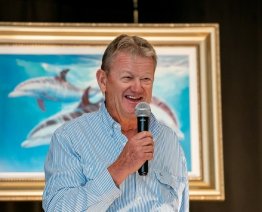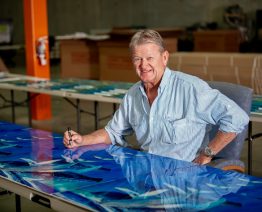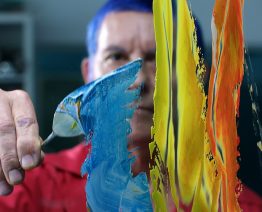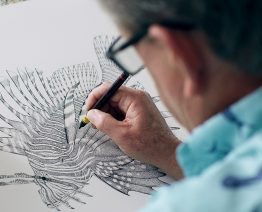The Science of Guy Harvey Art
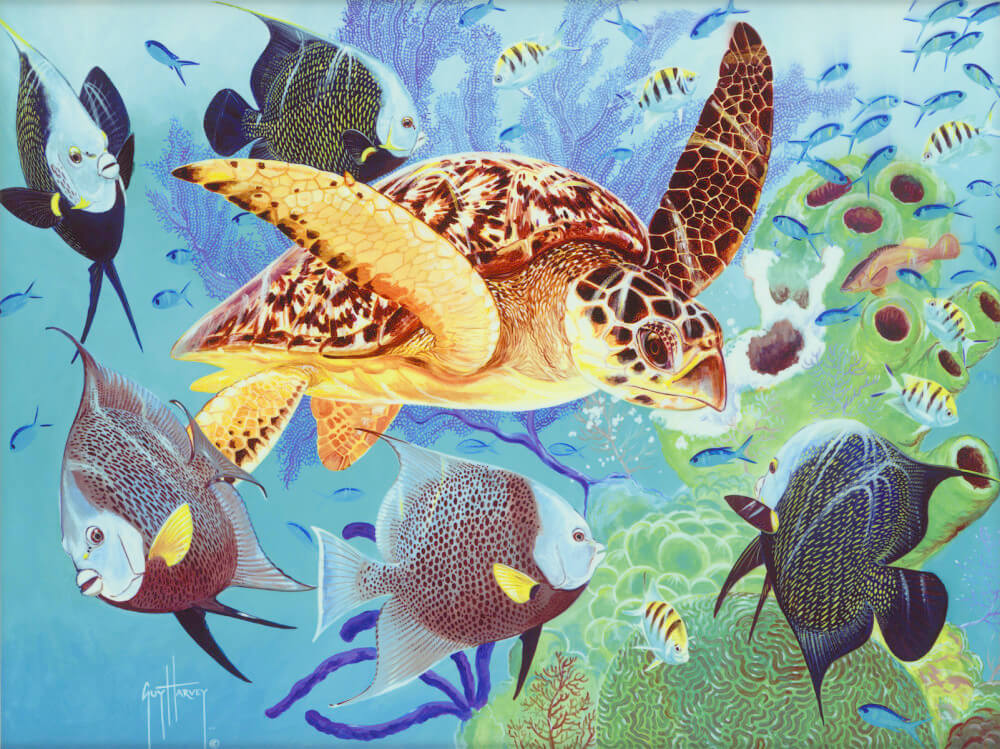
“Full House” (2015), Guy Harvey
Observing a work of art by Guy Harvey is like leaping into the ocean and watching the wildlife swim before your eyes. But what makes Harvey’s artwork so lifelike?
To put it one way, Harvey has done his homework.
Harvey has a unique mixture of occupations, including artist, scientist, diver, angler, photographer and conservationist. He draws upon a scientific education when creating his art, having graduated with honors in marine biology from Aberdeen University in Scotland in 1977 and earning a doctorate from the University of the West Indies in 1982 in fisheries management.
“The science has really helped in the whole strive for authenticity,” Harvey says. “Science really helps in your understanding of portraying the anatomy, the physiology of the animal and the ecology of the animal.”
Harvey’s artwork focuses on the realistic portrayal of warm water marine animals in their natural habitats. He has painted everything from sea turtles, mahi mahi and dolphins to whale sharks and his favorite, the marlin, in dynamic poses. His passion for marine life began at a young age, inspired by his family catching marlins while living in Jamaica. He also found inspiration from reading Ernest Hemingway’s “The Old Man and the Sea.”
“I’m a fishery scientist by profession,” Harvey says. “The painting part of it has evolved at the same time as the science, but my hobby became my profession.”
Harvey’s knowledge can be seen at work in his art. For instance, when viewing art featuring multiple species, it may seem far-fetched to see them congregating when the ocean is so large. Harvey says, however, that scenes like these occur frequently when fish gather under floating objects or plant life such as seaweed.
“In the ocean you are creating a mini oasis with all these bait species hiding under flotsam,” he says. “Any of the major predators depend on that sort of situation.”
Similarly, collectors will not catch Harvey mixing up species, such as depicting off-shore fish in a reef environment, or painting Atlantic and Pacific species mingling together.
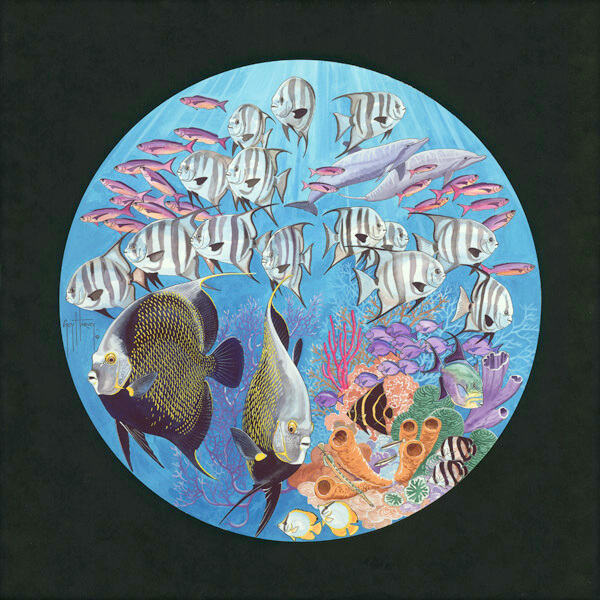
“Nature’s Aquarium” (2015), Guy Harvey
Harvey doesn’t merely depend on photographs or aquariums, either. He has participated in more than 6,000 dives, granting him access to these creatures for both scientific and artistic purposes. He says around 98 percent of his paintings are generated from his own experiences as opposed to referring to photographs.
“It’s because of my scientific knowledge about the animal that I can portray it in any position or bend or twist, and only somebody who really knows that anatomy can do that,” he says.
Harvey’s passion for marine life doesn’t stop at the canvas. His Guy Harvey Ocean Foundation was formed in 2008 to fund scientific research and educational initiatives to encourage the conservation of marine environments. Meanwhile, his Guy Harvey Research Institute, founded in 1999 at the Nova Southeastern University, has published more than 80 peer-reviewed papers in the last 16 years. This research has led to effective conservation efforts and the maintenance of fish biodiversity.
“Through research you achieve education,” he says. “If you have an educated community or foundation, then you can effect conservation. It can’t happen without the very first step, which is gathering the data.”
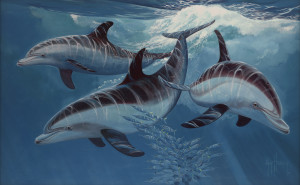
“Nosin’ Around” (2015), Guy Harvey
In fact, people can see this work in action at GHRItracking.org. The website actively tracks a number of marine animals, including sharks and marlins.
“The conservation is a big part of the art, not only in the execution of the art – I’m telling a little bit of a story about the natural history of the animal – but it also raises awareness about the aesthetic beauty, their appeal, and gets people thinking about what is happening to all these animals,” Harvey says.
For his efforts, Harvey has earned multiple awards and honors, including the NOGI Award in 2004 and the Jamaica Committee Award of Excellence in 2010 for his commitment to marine sciences. He has also been inducted into international halls of fame for game fishing, swimming and scuba diving.
Be sure to view Harvey’s artwork here, and don’t forget to check out the hull of the Norwegian Escape cruise ship, designed and painted by Harvey.

